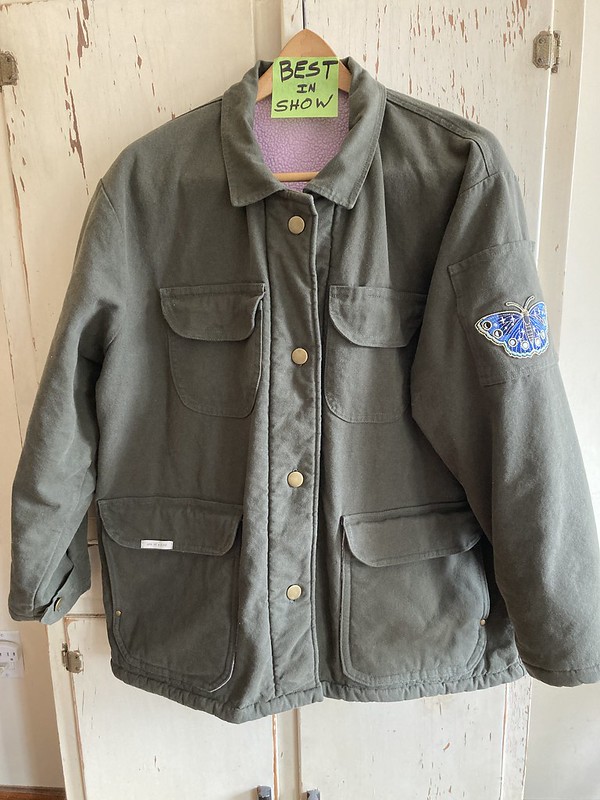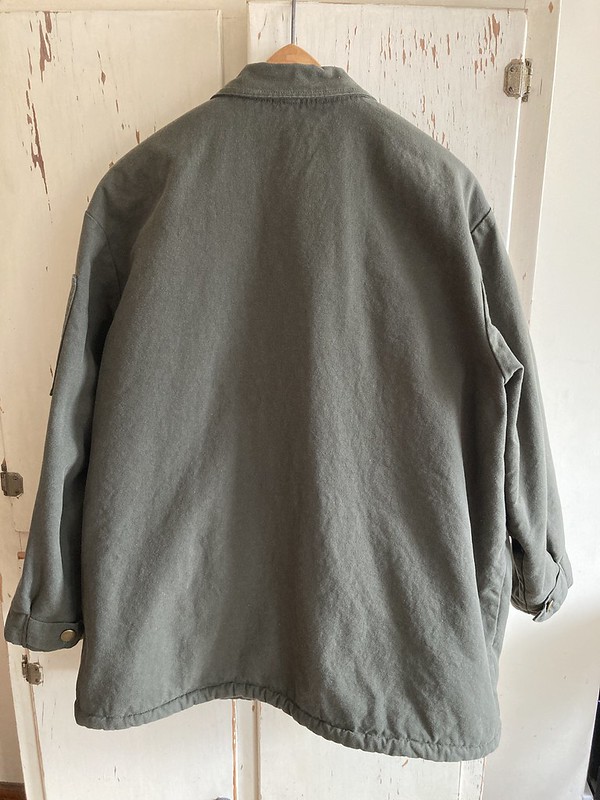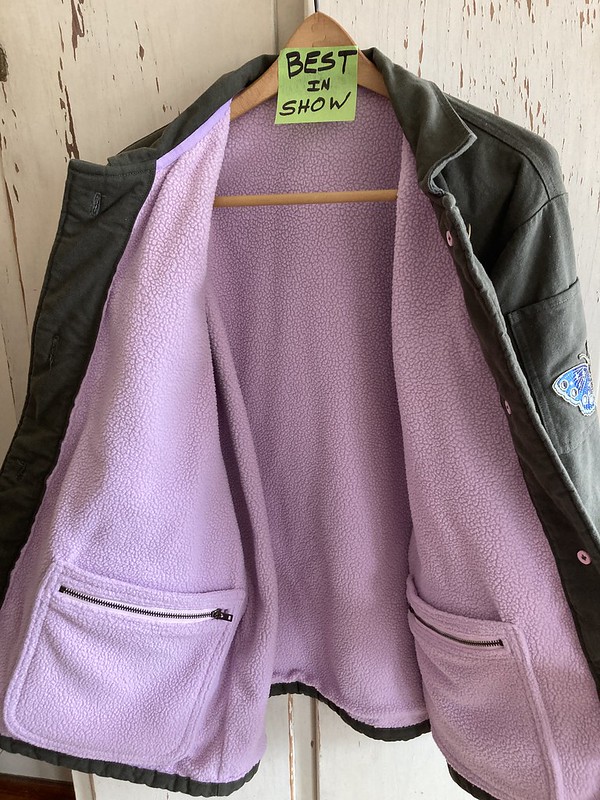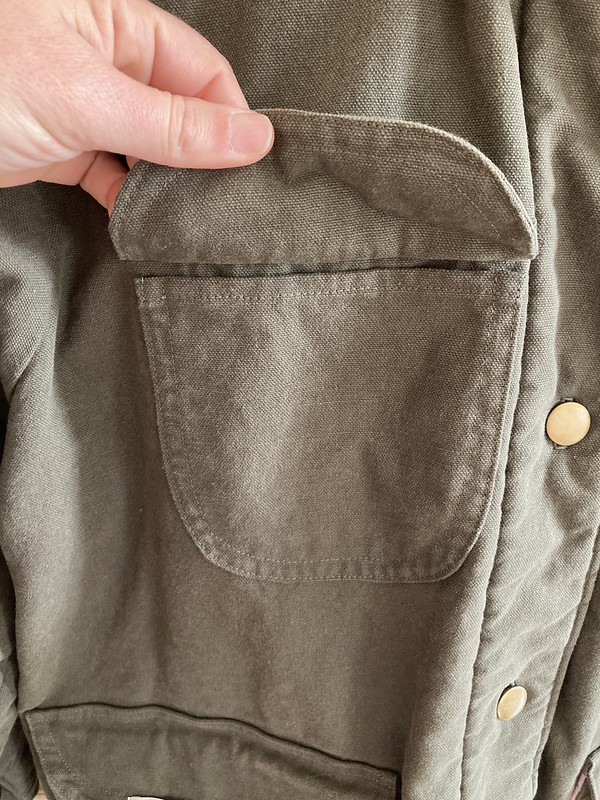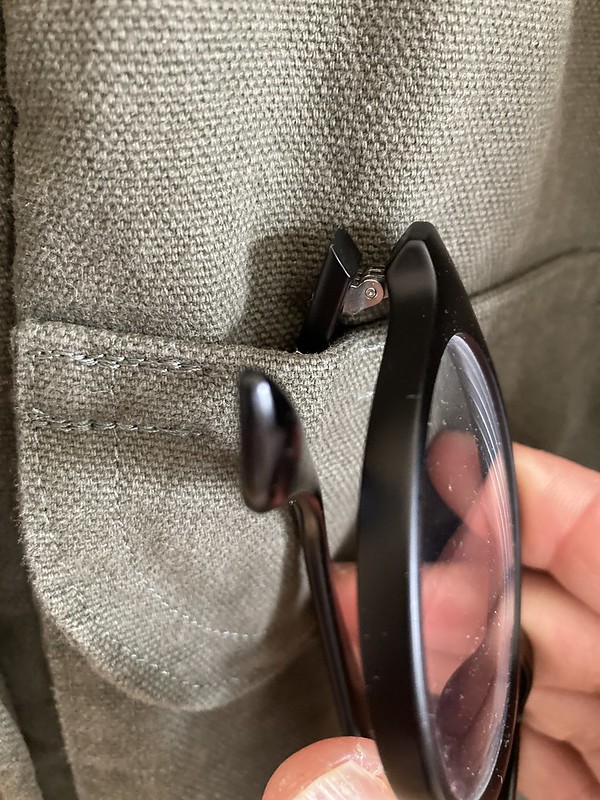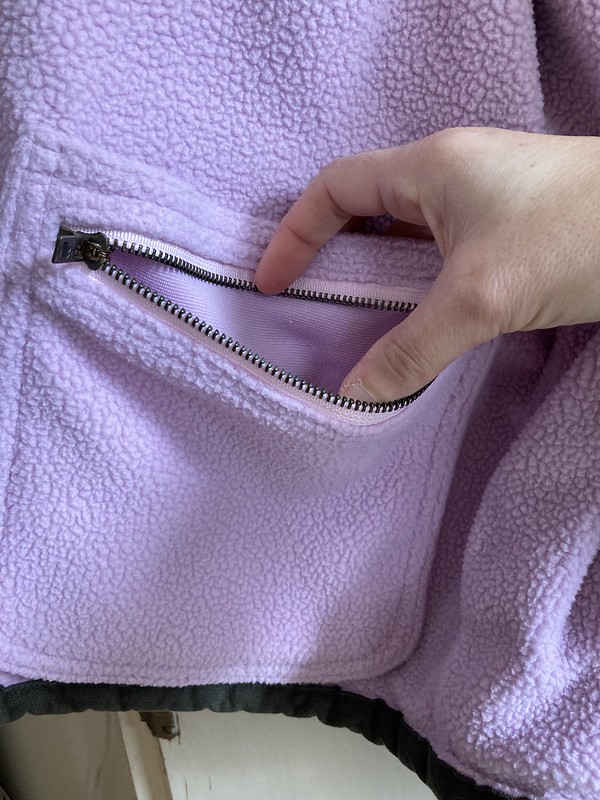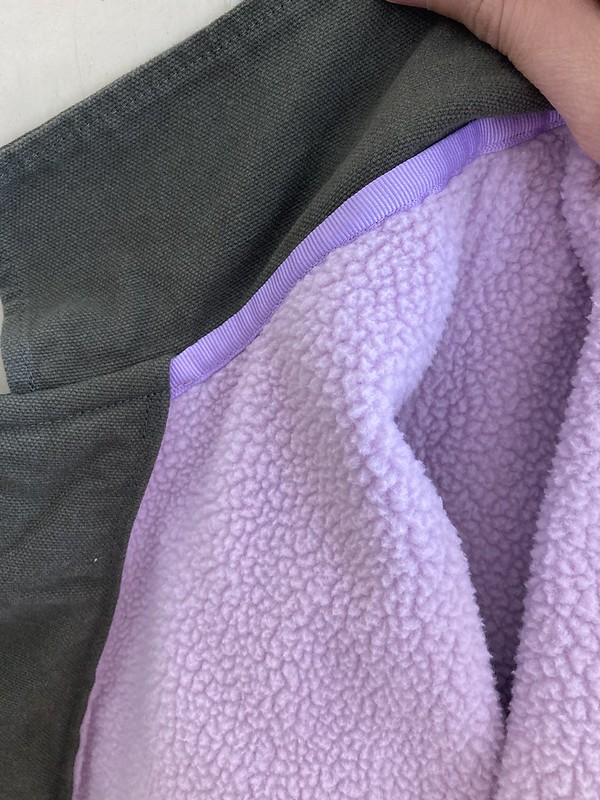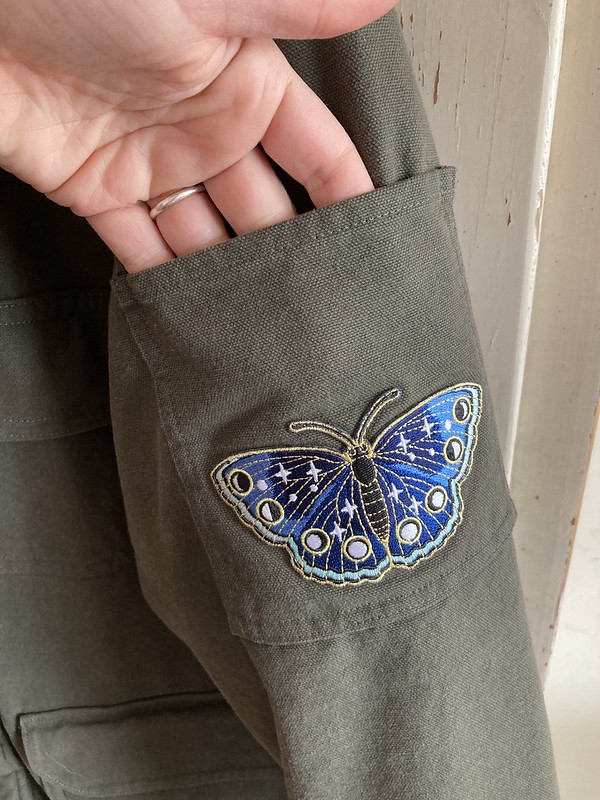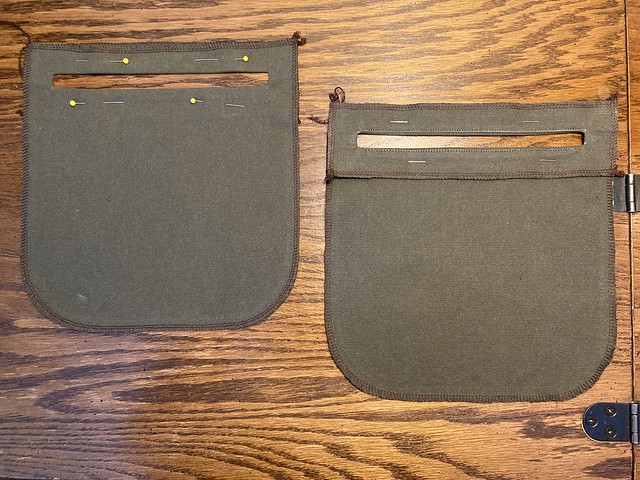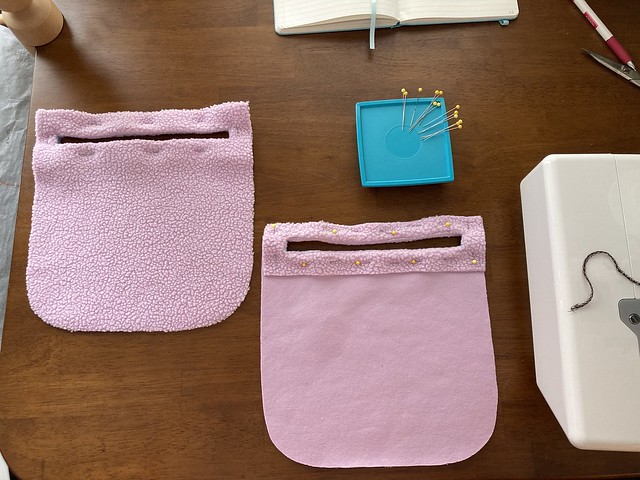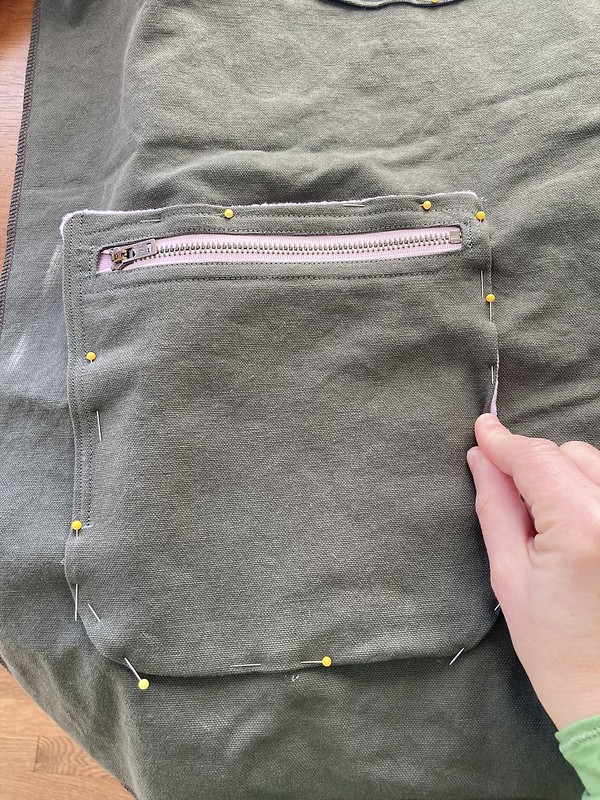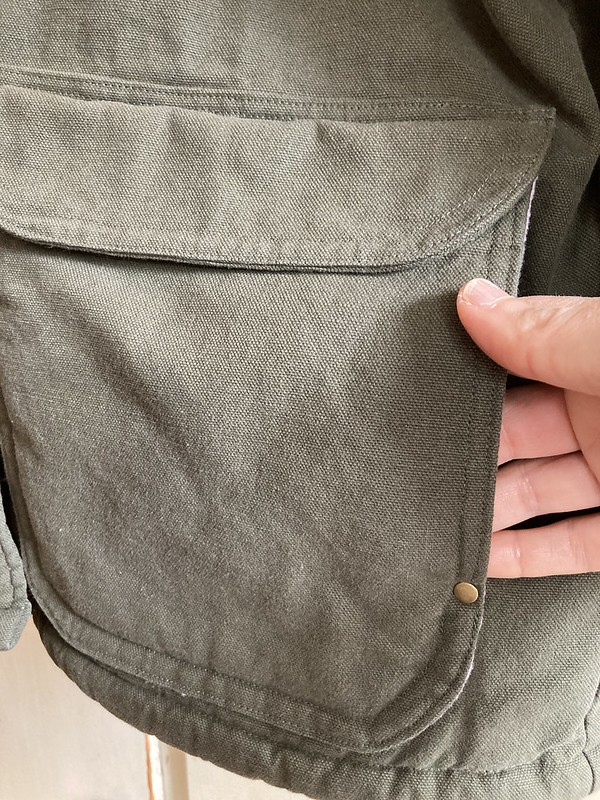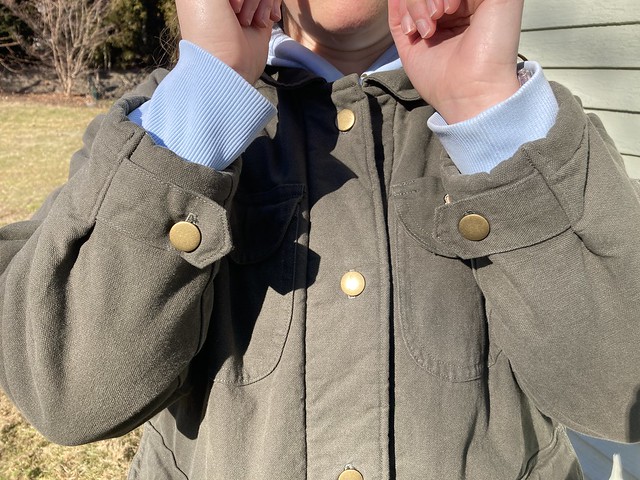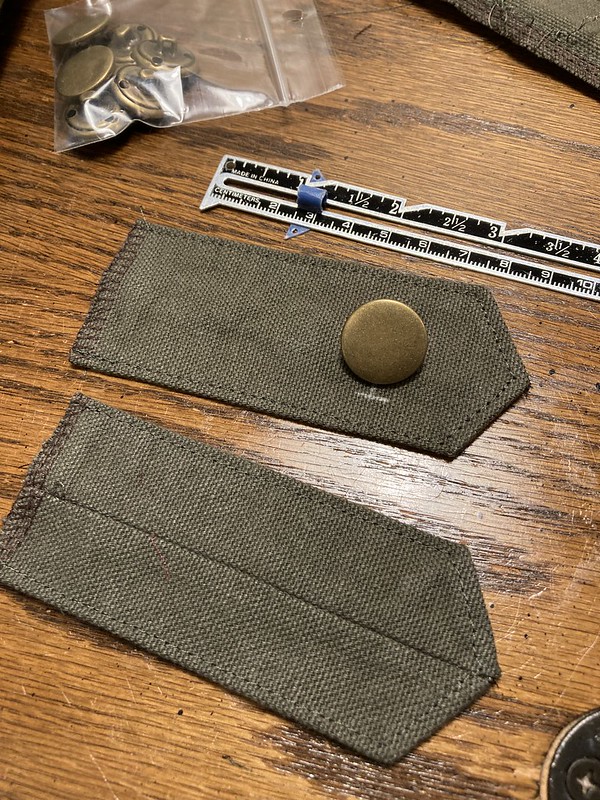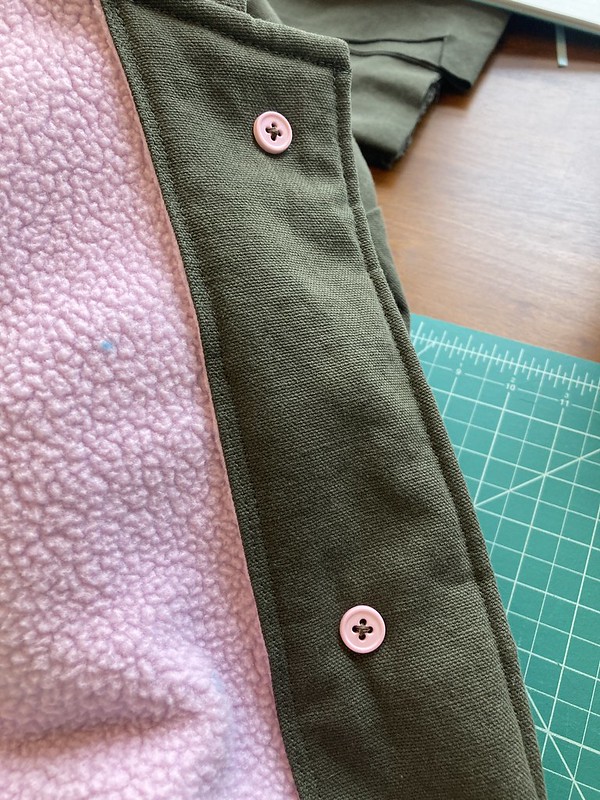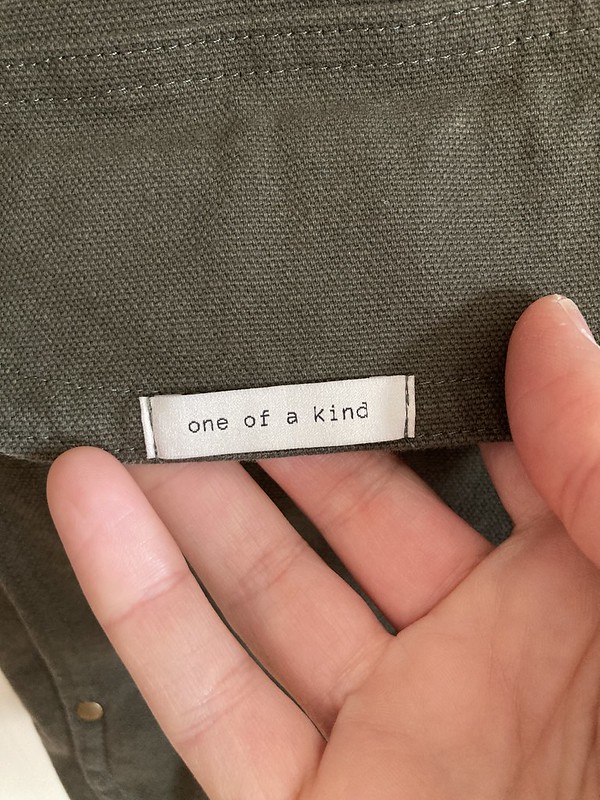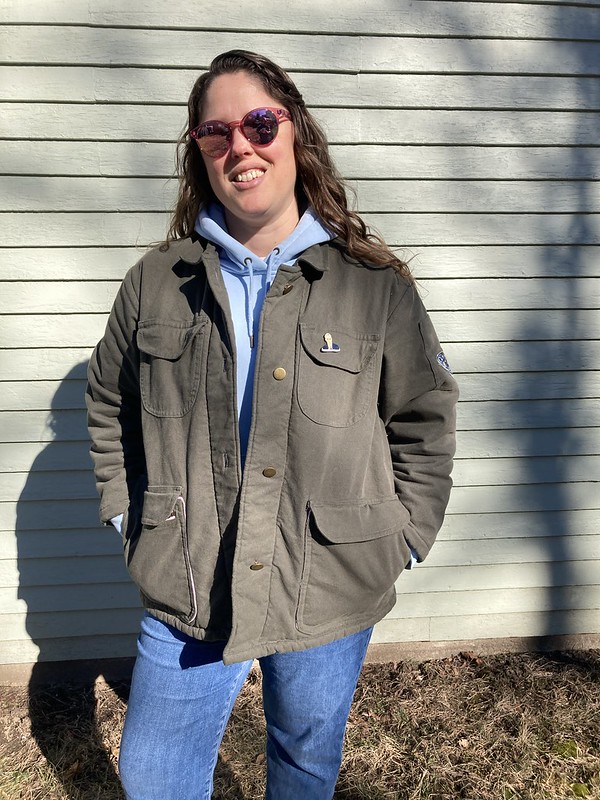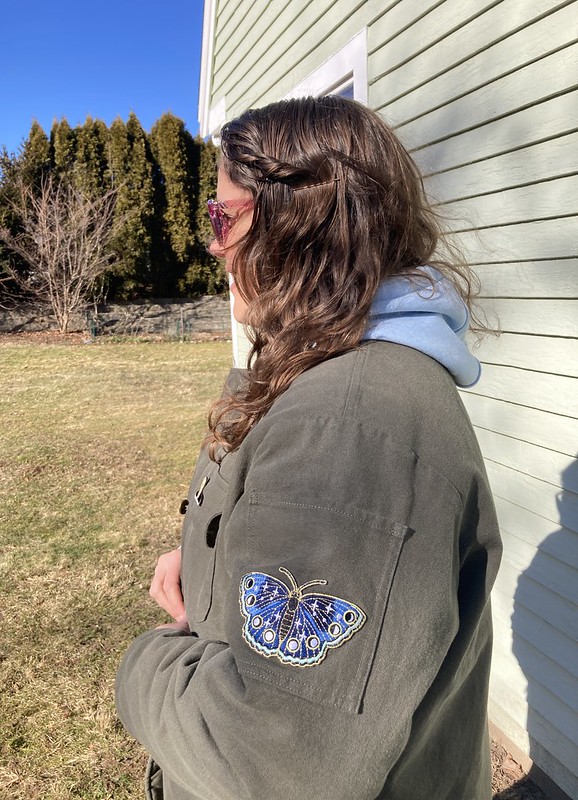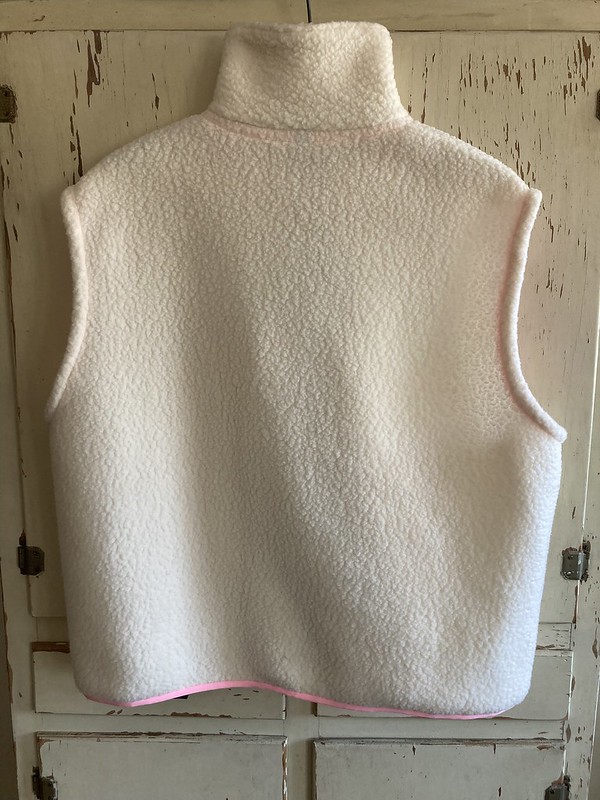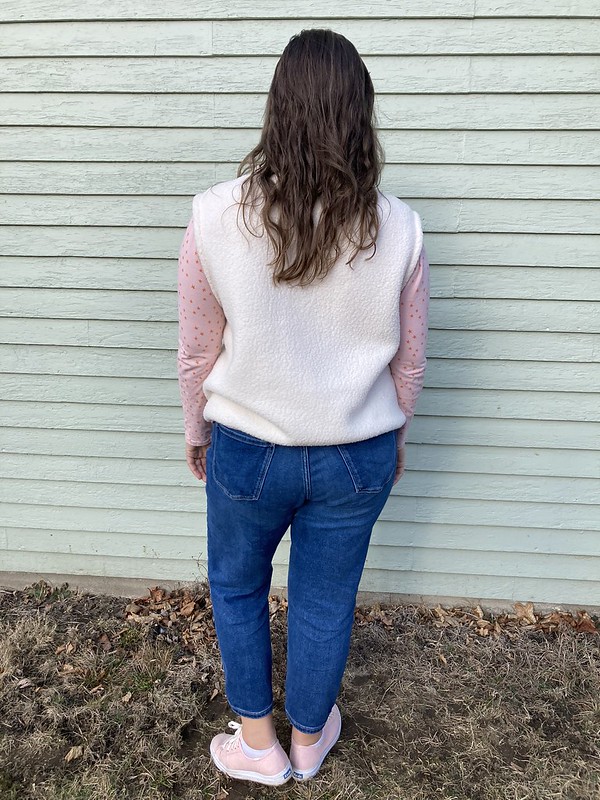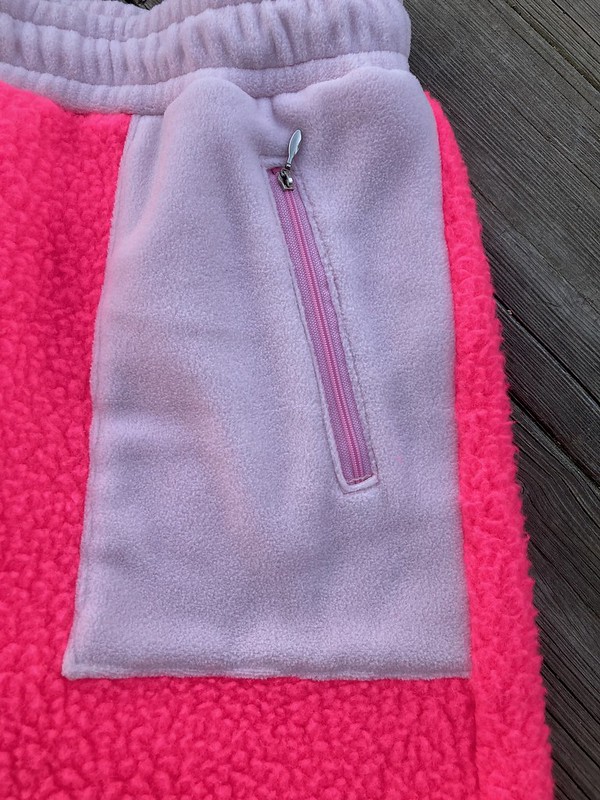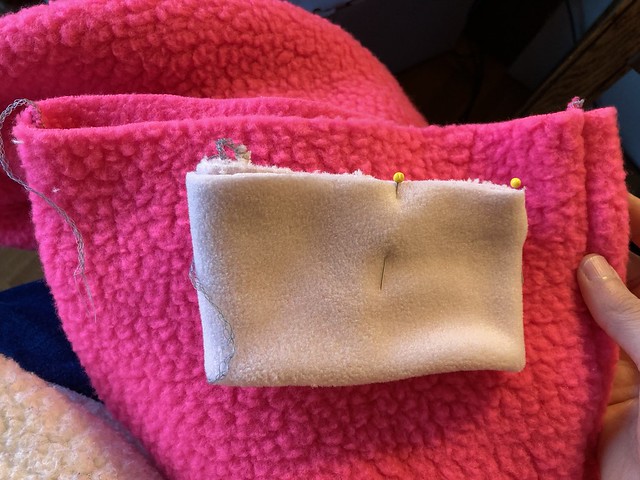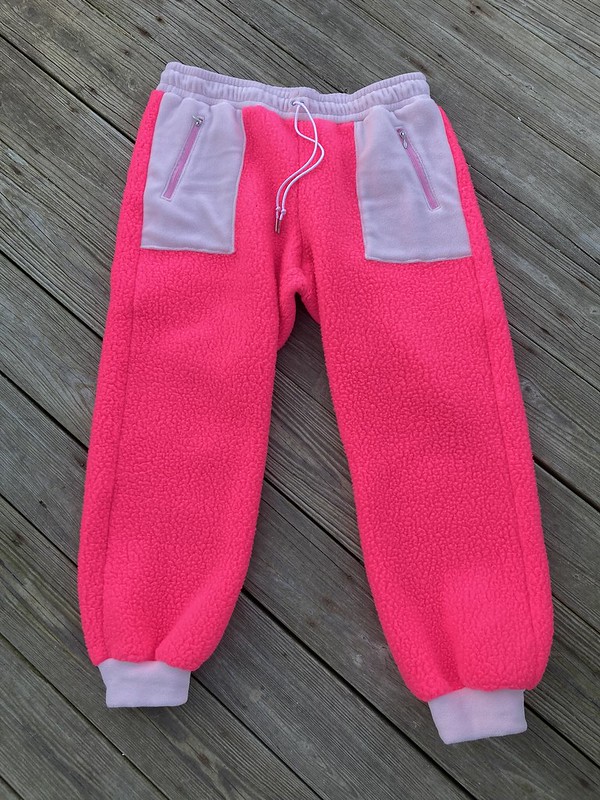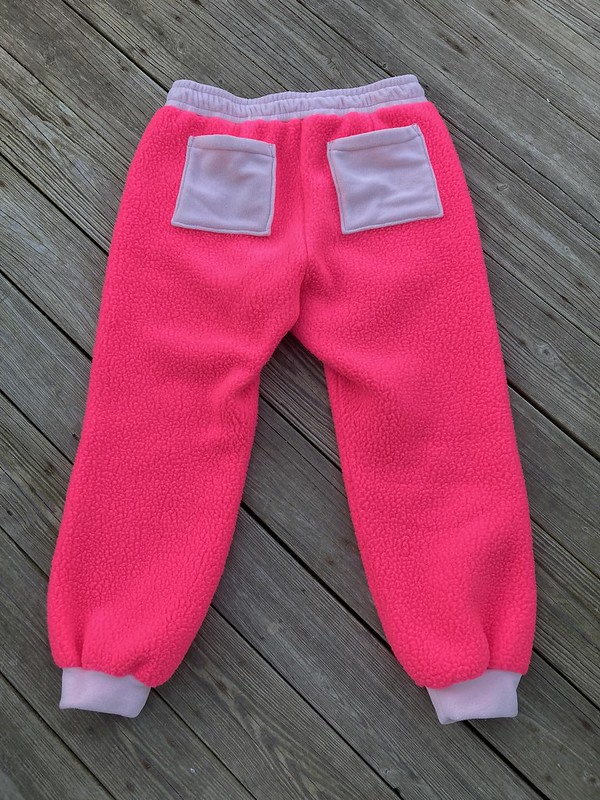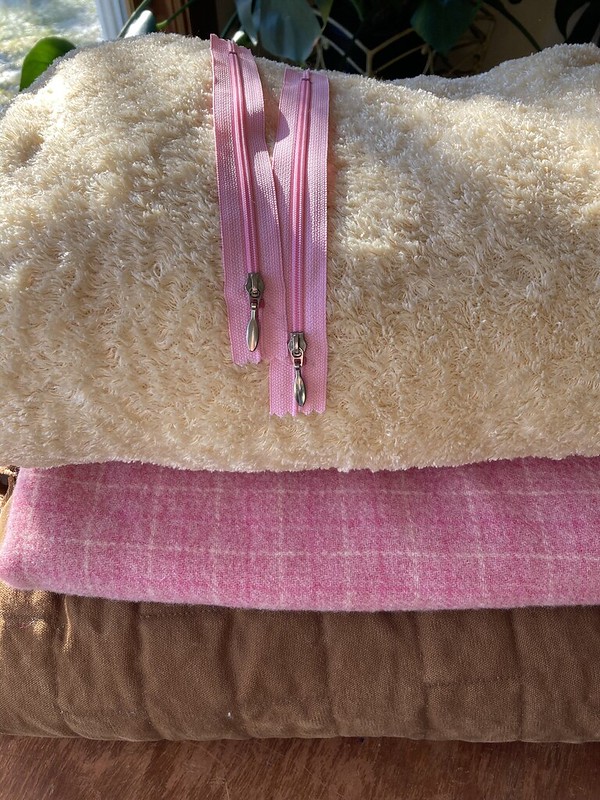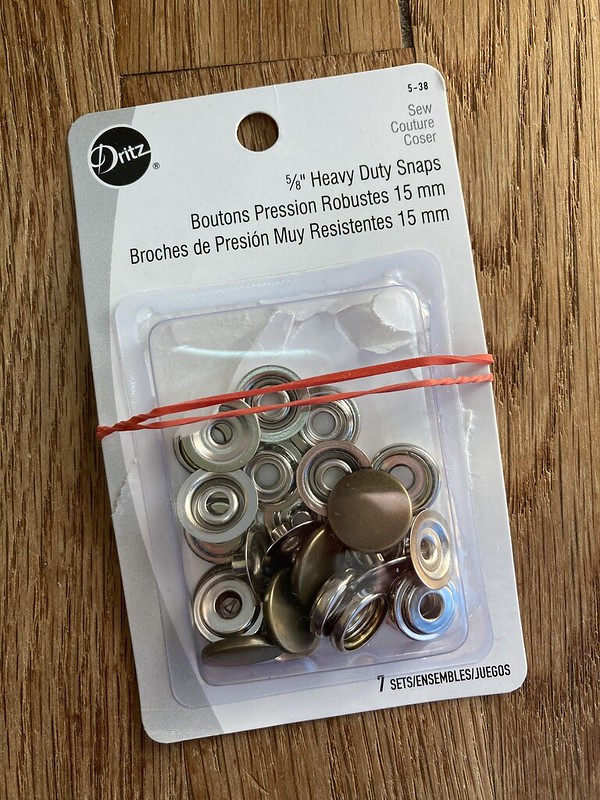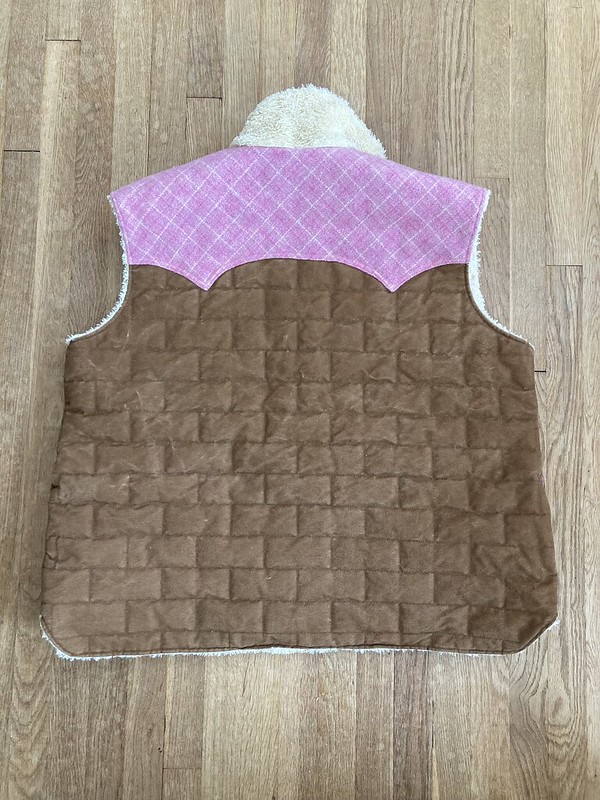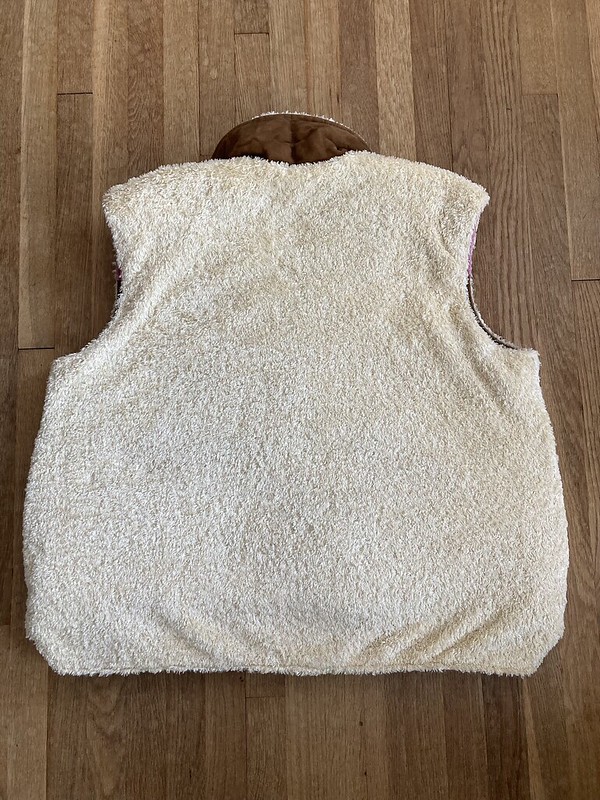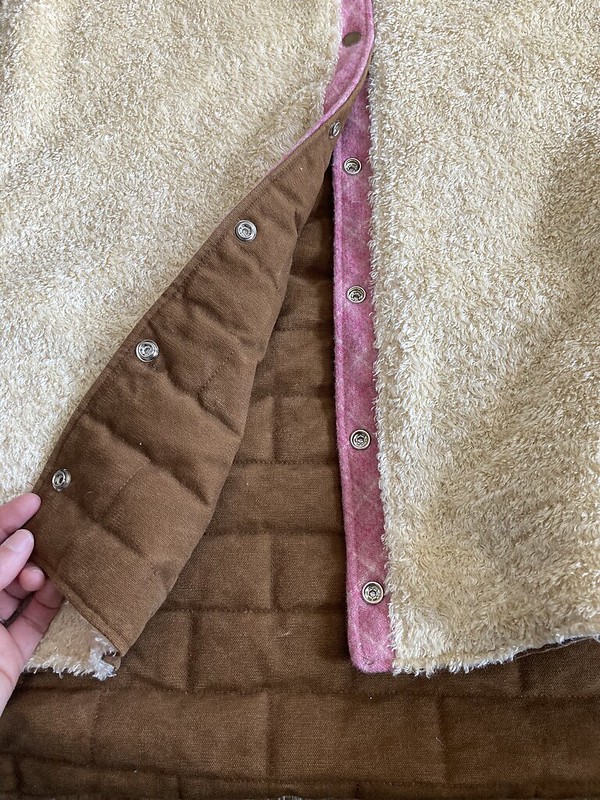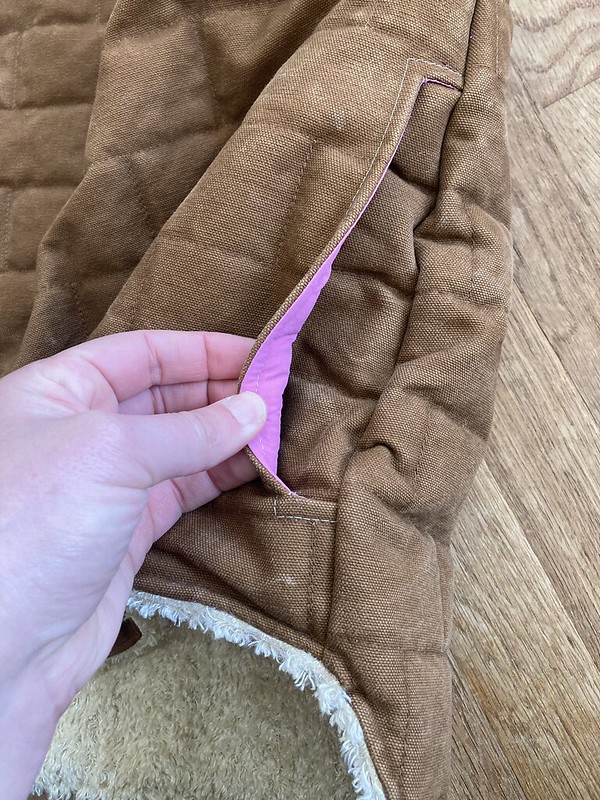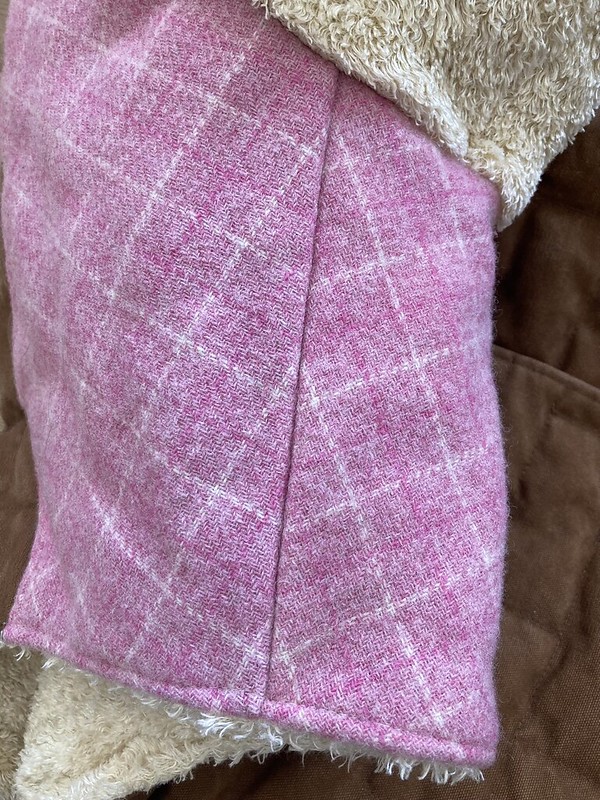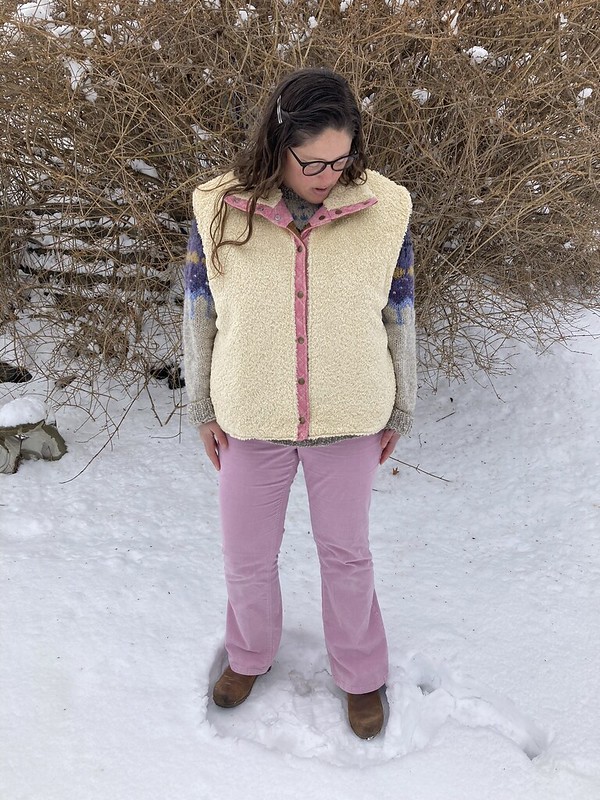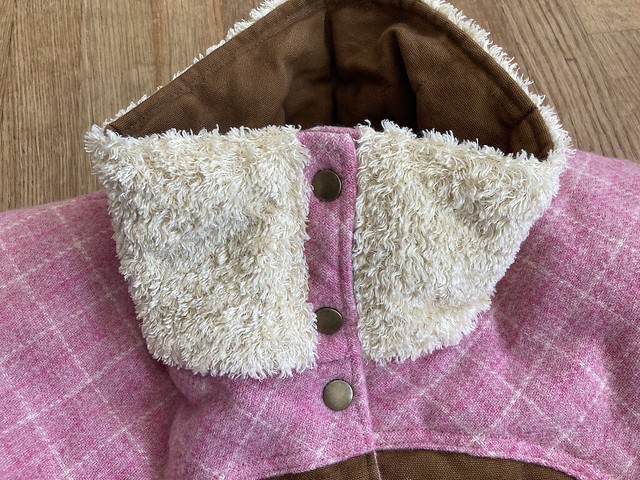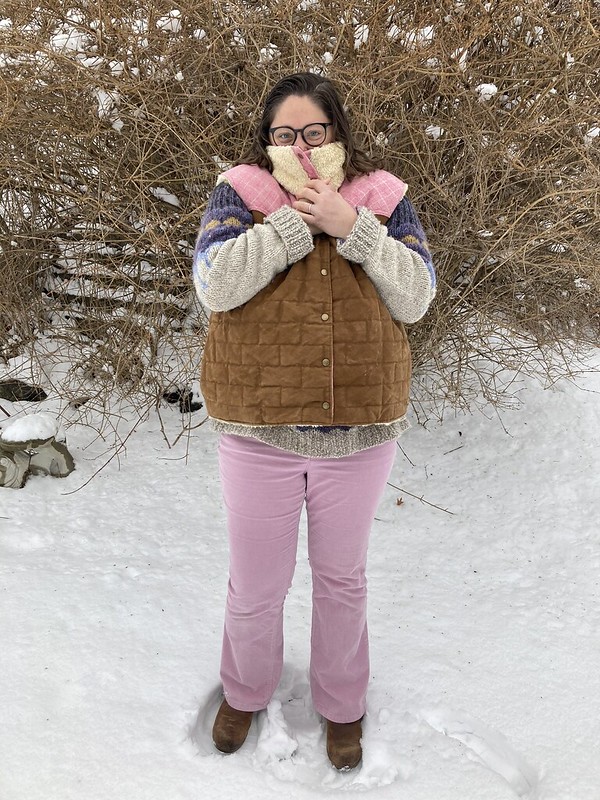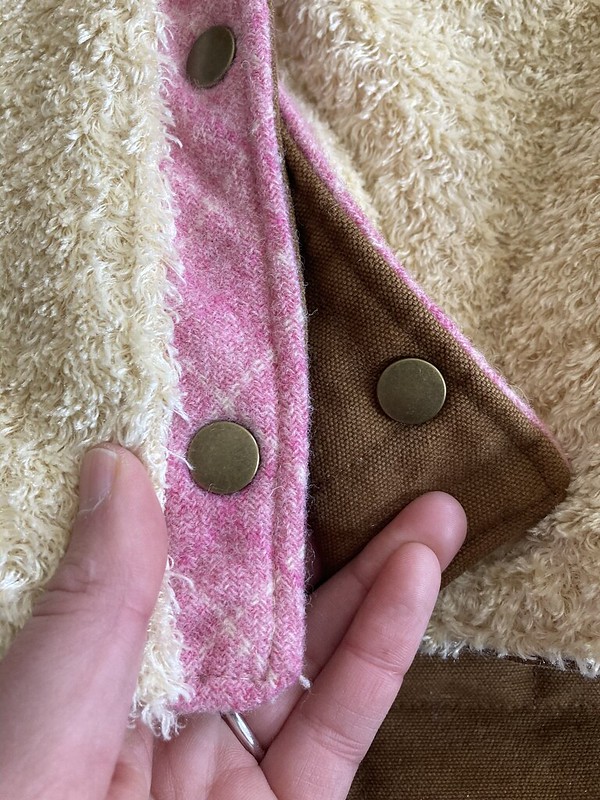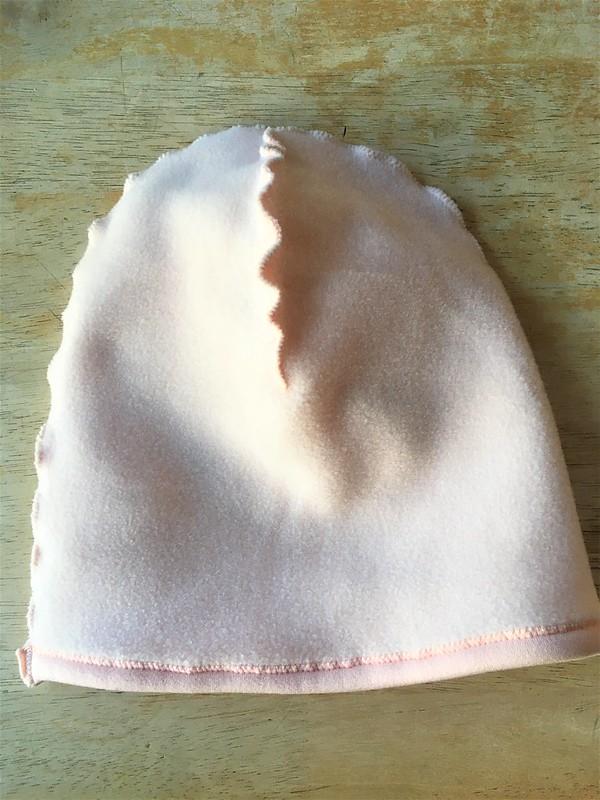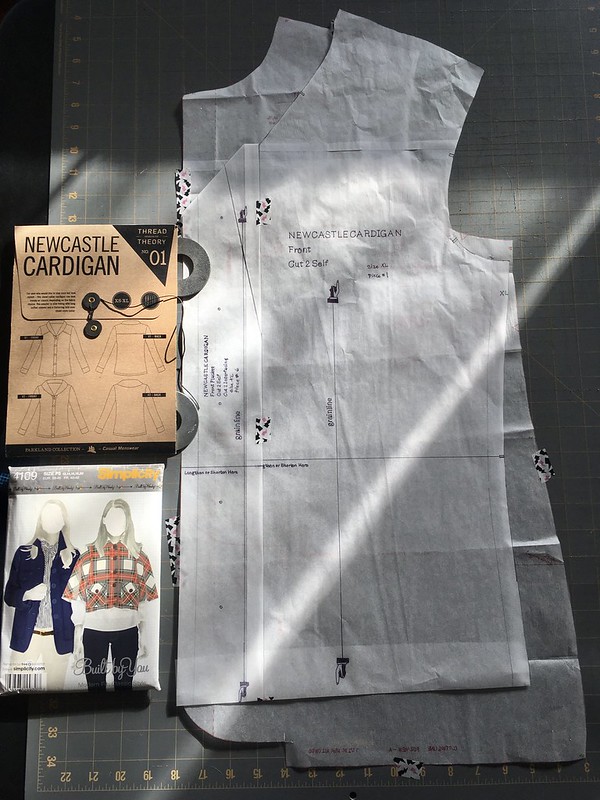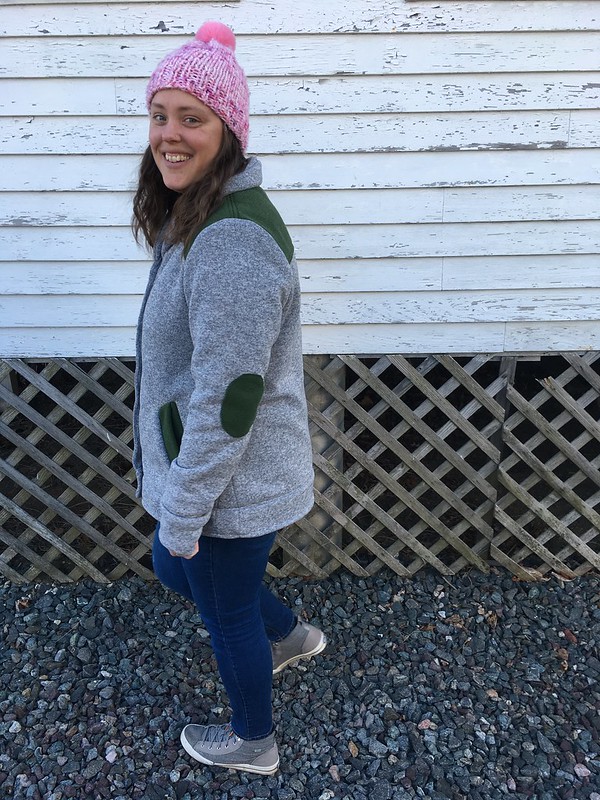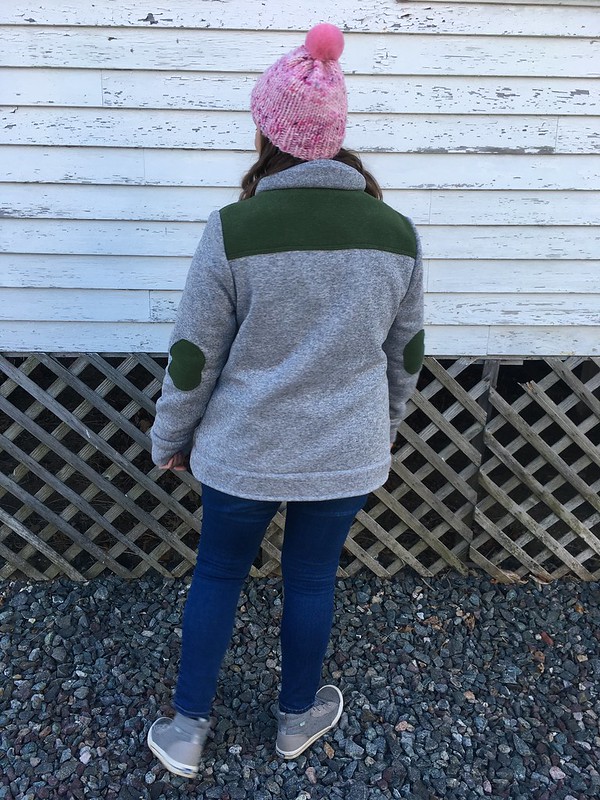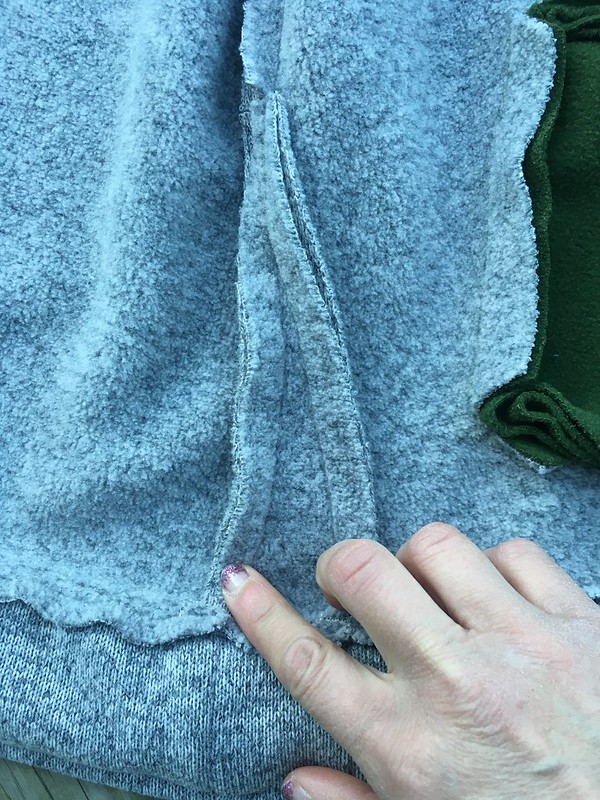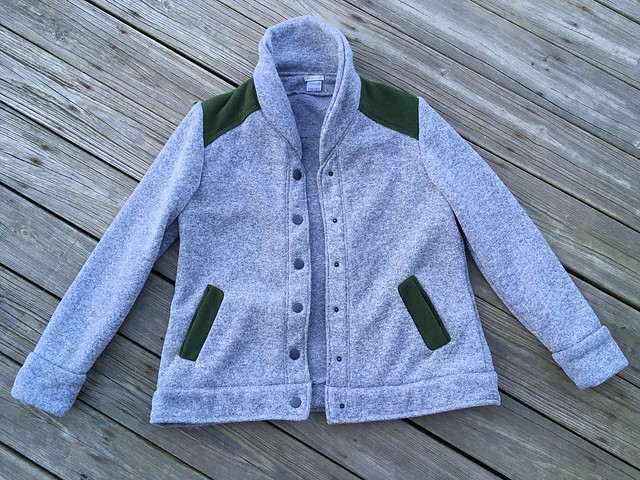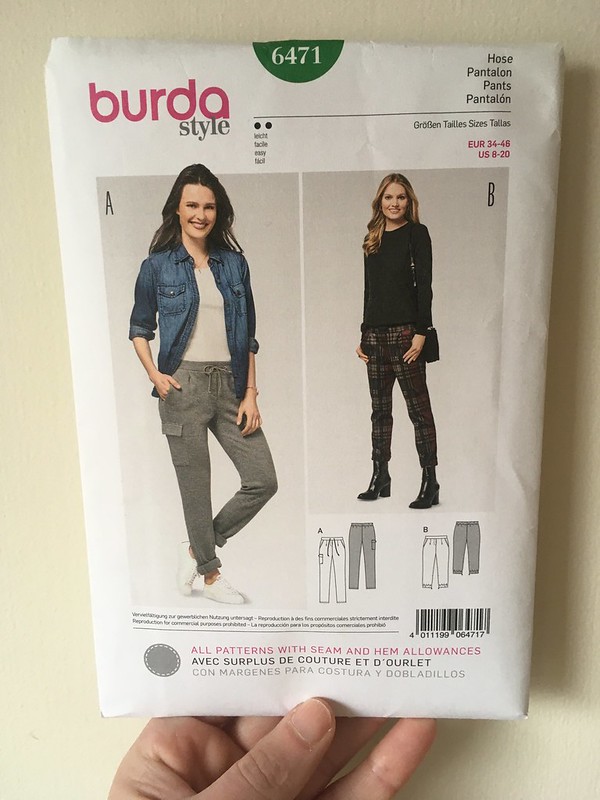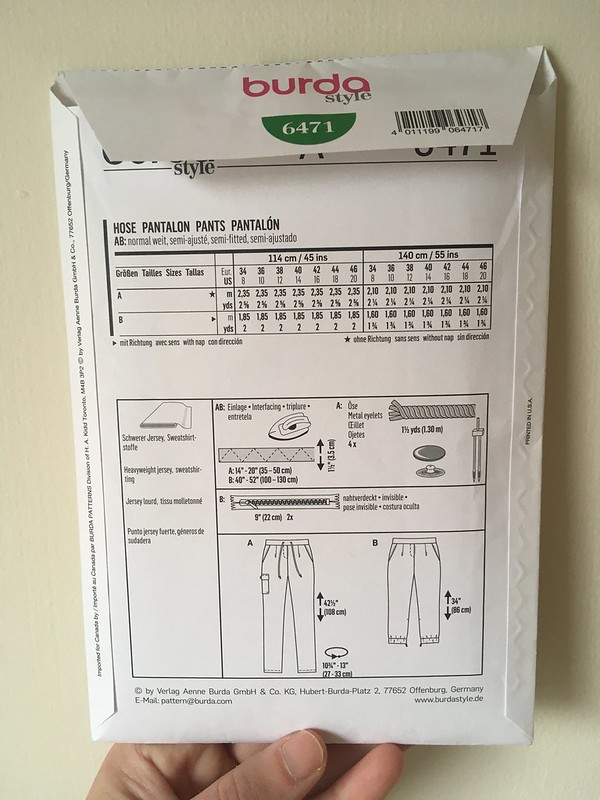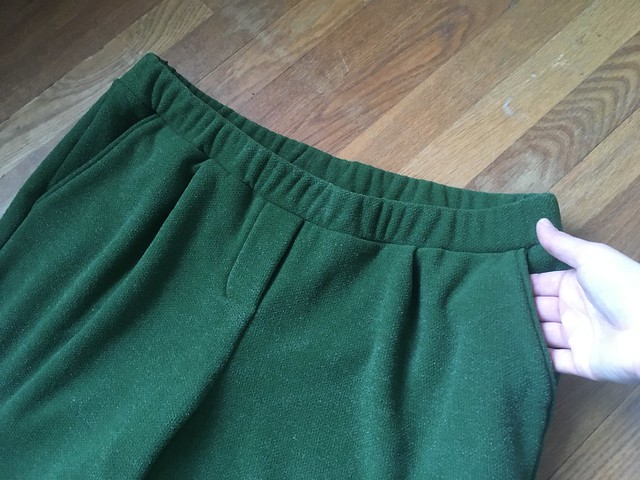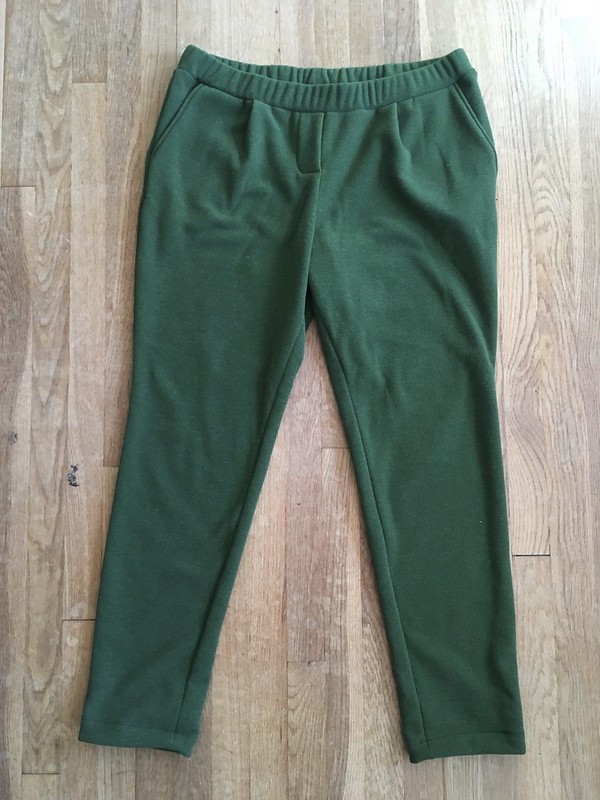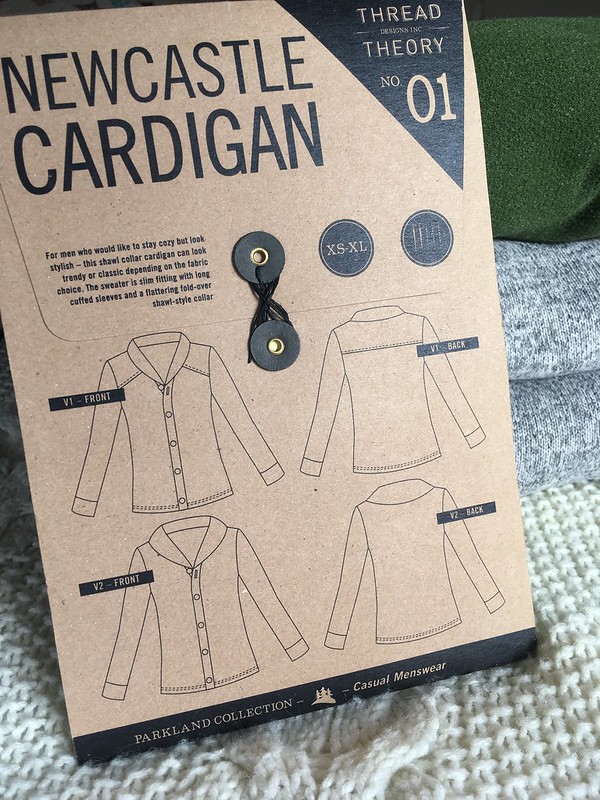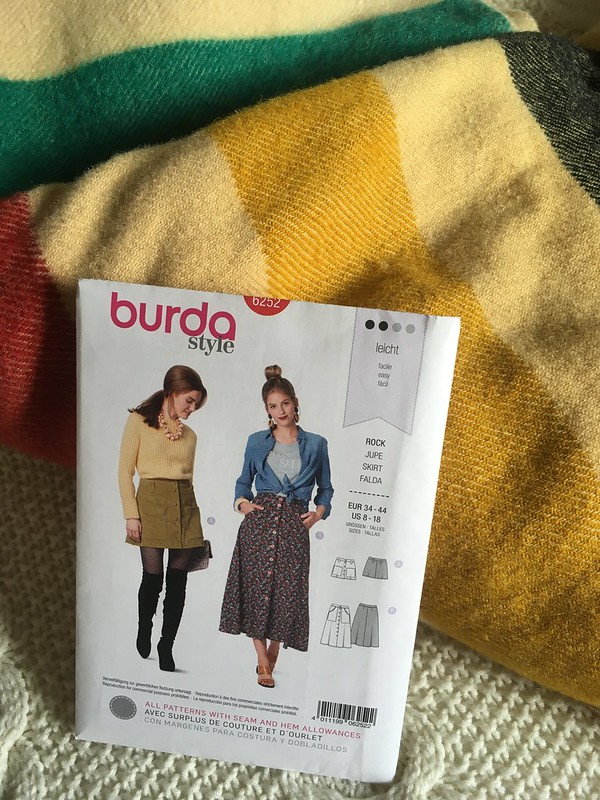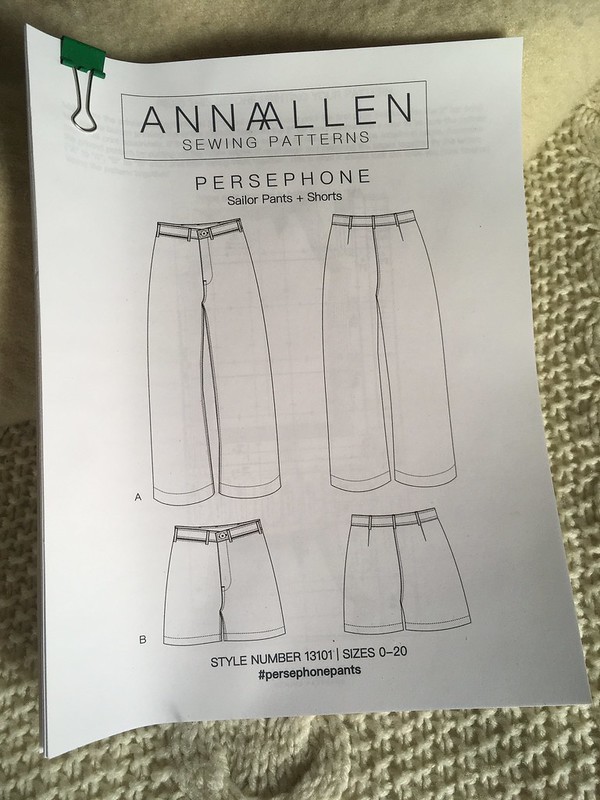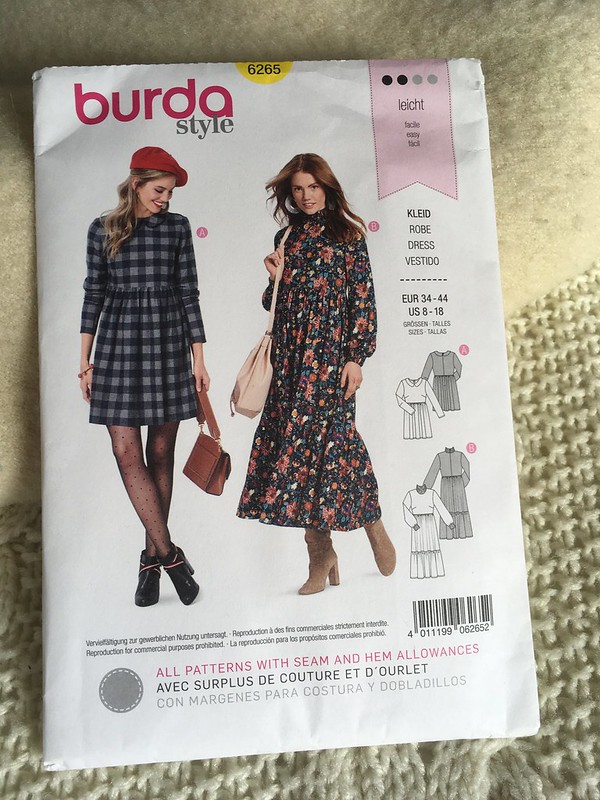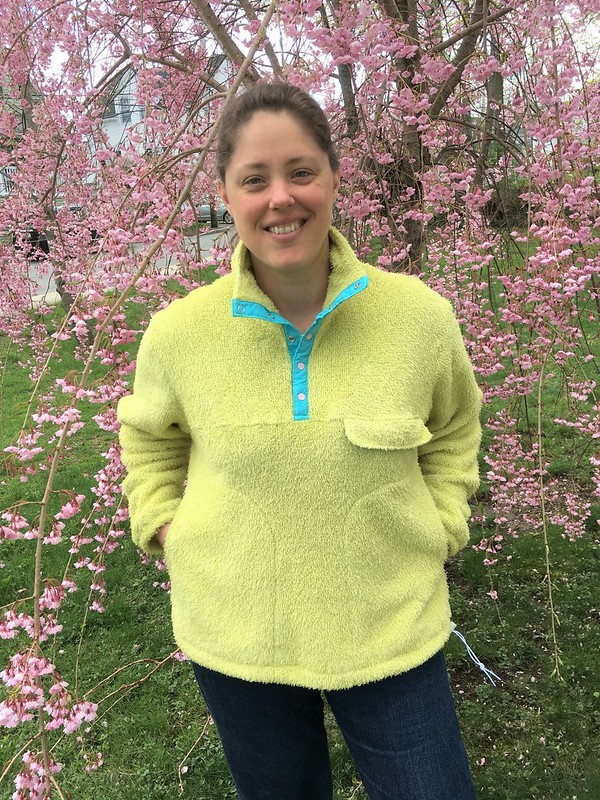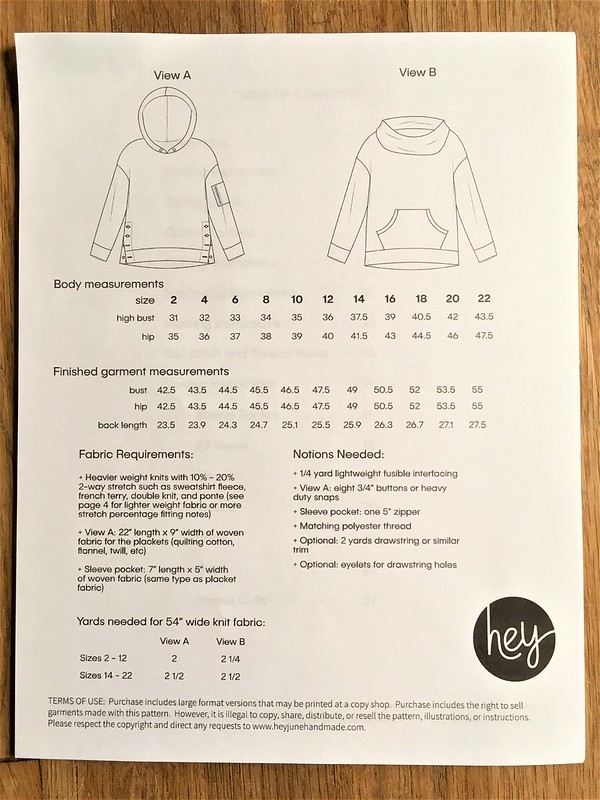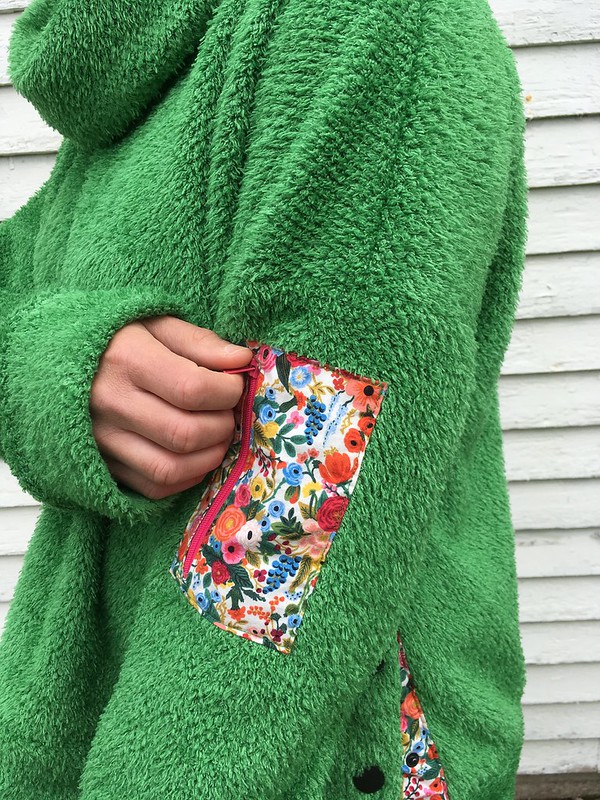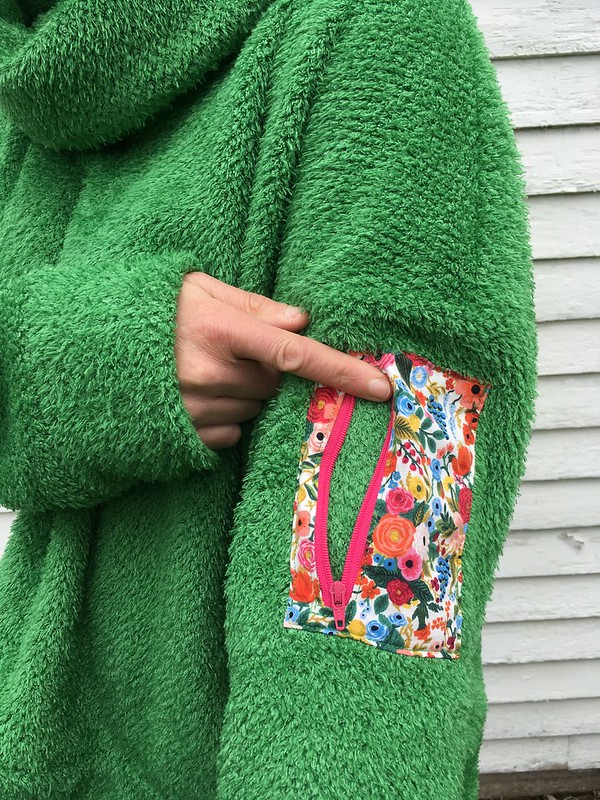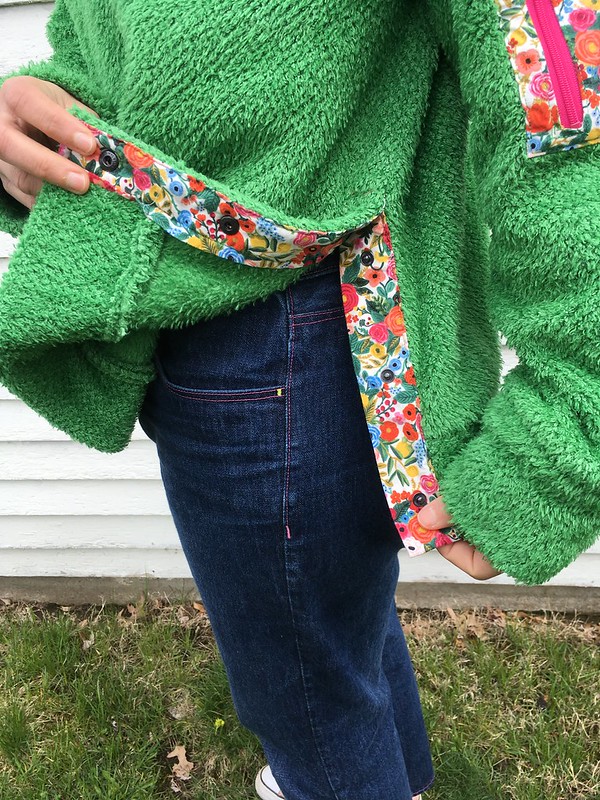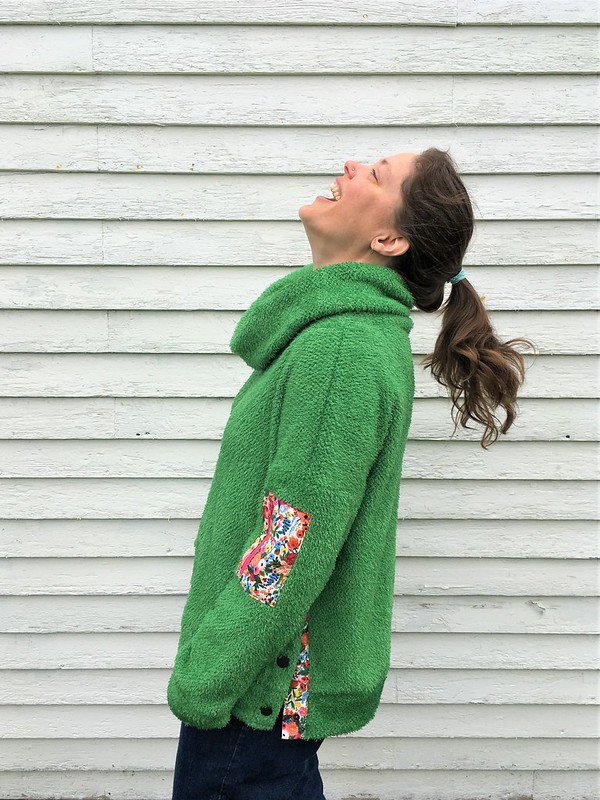
Here is a project that I wasn’t planning on making…but I’m so glad I did! Someone I met at the Pattern Review Weekend in Lowell, MA last June invited me to join her and a few others in a coat sew-along. It’s been one of my goals since chucking Instagram to meet more sewing and knitting people in real life, so after thinking it over, I decided to go for it.
What to sew was the question. Of course, with every new project, there is so much potential. I went down a major Pinterest path. What could I do to make the best coat EVER?! I could transform a wool blanket, I could include many super cool, AMAZING details I had saved as ideas… I really got into the planning! In the end, I came up with a much more pedestrian idea that I could add some nice extra details to: the humble barn jacket.
The Green Pepper, a pattern company I have used before and like, has pattern #537, the Frenchglen Barn Jacket, with some great hip pockets and the option to line your jacket, so that seemed like a good base.
You may not be surprised, considering what you just read, when I tell you that once I decided on a barn jacket after turning my gaze away from wool blanket coats, I decided to make this THE BEST BARN JACKET EVER! Yep, I went nuts on this idea, too. All the pockets! All the details! I compared my pattern to my favorite vintage men’s Woolrich hunting coat that I thrifted and a Dickies work jacket that I also thrifted, and my beloved wool shirt jacket that I thrifted and embellished. Ah…the planning stage is the best! All the possibilities are before you, just waiting to overwhelm you with their glory.
After indulging my planning love, I edited my ideas down. And in the end, I made a fairly normal looking jacket. Haha. So much for taking the fashion world by storm. :) That being said, there are some little details and surprising elements that I am really proud of and that keep the coat from being way too normal to suit me. I can buy normal, but I rarely want to sew it.
The goal for this project was to have it finished by January 31, 2024 so that we could actually wear our coats/jackets during the colder months. In order to accomplish this, I sat down with a cup of coffee and planned out a tentative schedule for myself, week by week, with what I wanted to accomplish. Normally I just let my sewing happen as I have time and energy, but that often means that projects drag on beyond the season they are meant for. I really wanted to try to make this deadline.
The Pattern
I bought my pattern from Field’s Fabrics on Etsy, which had cheaper shipping than ordering directly from the store. This is a unisex pattern, and my measurements put me in a size large for the bust, large/extra large for the waist, and extra large for the hip. I chose to use the square collar. In an absolutely uncharacteristic move, I made a muslin out of old sheets. I wanted to make sure my jacket would fit over other layers like sweaters, so that is how I tried on my muslin. It was pretty good. I definitely could have made it in that size, but I had a few questions. Should I lengthen the sleeves? Did I need a broad back adjustment? How about a forward shoulder adjustment?
Even more uncharacteristically, I made a second muslin in a straight extra large. I blame the fact that I was in a sewing group–didn’t want to be too much of a slacker! ;) Amazingly, the extra large took care of a lot of my fit issues. It didn’t look as fitted, but I no longer felt I needed a broad back adjustment or that a forward shoulder adjustment would make a huge difference. And the sleeves only needed maybe 1/2″ more length.
Then it was time to edit my plans for extra details. I soon nixed the idea of an interior chest pocket. The pattern came with great double pockets both inside and out at hip level, so I didn’t feel like I needed another interior pocket, and I didn’t want to weigh my fleece lining down too much. I settled on adding two outer chest pockets with flaps and a sleeve pocket.
I wanted a little opening in the flap of one of the chest pockets so I could slide in the arm of my glasses or a pen or pencil.
I have this feature on my thrifted wool shirt, and it’s great. I was also hoping to use an embroidered butterfly patch I had been saving for just the right project.
The Fabric
For my outer fabric, I chose some dark olive green cotton duck canvas from Big Duck Canvas, an online store I have ordered from before. I like olive green–it goes with a lot, but isn’t the same color as most denim, so there is good contrast when I am wearing jeans. I think I ordered three yards of this fabric, which was 58″ wide and 10 oz./yard. It washed and dried great, without the color loss that I sometimes see in cotton canvas.
My lining is a Polartec ThermalPro Shearling Jersey lining fabric from Mill Yardage in NH. I really like olive green and pink, and this fabric straddles the line between a pink and light purple. I also like green and purple, so it was a win. The idea of a fun-colored lining in an otherwise utilitarian-looking jacket was so appealing! In fact, seeing this fabric on sale is part of what got me thinking about different coat options from what I had first considered.
Unfortunately, shipping such a bulky fabric has gotten pretty cost prohibitive, but luckily this place was within driving distance from where I live. My husband offered to buy it for me for a Christmas present, and I happily took him up on it and told him I would drive to pick it up. While I ordered my canvas and pattern in November and had started planning before Christmas, I knew I wouldn’t start sewing until after Christmas, so this worked out really well.
While I very briefly thought about using a more slippery fabric in the sleeves of the jacket, I didn’t consider it for long. My Woolrich hunting coat is lined entirely in flannel, and I never have trouble getting it on. Similarly, I sometimes wear fleece zip-up jackets over my sweaters, and I have no problems getting them on, so I was pretty sure I didn’t have to worry.
Notions and Extras
I really wanted all my hardware to match. I have noticed that some of the ready-to-wear clothing and bags that I like and find most striking stand out because of good details and good hardware, which means matching metal parts! I was hoping for zippers with colored zipper tape to coordinate with my lining and a metal color that would work with whatever I found for front closures. Wawak had zippers in the size I needed in a pink that would look good with my lining, and I really liked the antique brass metal option.
Buttons were my front closure of choice since they would be easy to replace if lost and would be easy to install. I didn’t want to have to worry about messing up when putting in snaps or jeans tacks or having them rip out down the line. It’s not like this is a huge problem that I regularly battle, but I was trying to think not only of problems while installing my front closures, but also being able to keep my coat in repair over the long haul. Luckily, I found some antique brass metal shank buttons from kabooco on Etsy that matched with the antique brass metal of my zippers. I even had some 5/16″ antique brass rivets that I had bought from Wawak when I was making my MidnightSUN bag. Yes!!! Total coordination!
For the ribbon to finish the inside neck edge and create a hanging loop, I found a light purple grosgrain at Joann’s that looked great with the pink/purple lining that I had.
Unfortunately my grosgrain ribbon was 5/8″ instead of the 3/4″ they called for. If you are making this and run into that problem, erring on the side of wider is probably better than narrower. I could easily have used a 1″ ribbon to finish the neck. In order to get my 5/8″ ribbon to work, I offset it by 1/8″ so it would be low enough to cover things and I only barely made it. I suppose you don’t want it too wide for the hanging loop, but that’s an easier problem to solve.
My hope for the Velcro on the sleeves was that I could replace it with buttons. It seemed like those would look nicer and last longer.
Pattern Manipulation
As I mentioned before, most of my fitting issues ended up not being issues, although I did lengthen my sleeves by 1/2″. This was surprising, because it’s not a normal adjustment for me, but I’m glad I did it. They came out to be the perfect length. You’ll have to take my word for it, though, because I apparently forgot to take a picture of that. Oops!
To make my chest pockets, I took the suggestion of one of the members of the group, and made smaller versions of my hip pockets. I traced an extra set of pattern pieces, cut them in half vertically and overlapped them, taped them, and then cut them horizontally and overlapped and taped them.
Once I liked how they looked, I traced new pocket pattern pieces from the taped up bits. I did the same sort of thing with the pocket flaps, although they didn’t need to shrink as much. I also drew myself out a little patch pocket for my sleeve.
I had to recut my pocket flaps and my patch pocket once I started sewing because they weren’t quite right. I had made the flaps too short and the patch pocket too narrow to put the butterfly patch on. Once I start sewing, I confess I hate going back and re-cutting anything, but these were small fixes, and I made myself do it because I knew I would be happy with the results.
Cutting and Sewing
I finally cut my outer layer on January 10. From there, I just kept cutting when I had time until it was finished. On the 17th, I marked all my pieces as instructed, and started serging edges the next day. Then it was on to sewing! Finally! When sewing just canvas, I used a universal 80/12 needle and when sewing only fleece, I used a ballpoint 80/12. When it was both fabrics together, I used the universal.
At that point, I actually did sew pockets for days. There was some very dodgy topstitching during construction. Sometimes it was me–I didn’t do a perfect job, but decided I could live with it. Sometimes it was trying to sew some very tricky fabric layers. And sometimes it was that there just wasn’t enough space for all the topstitching within the given area. The nice thing about sewing for yourself, though, is that you get to decide how much imperfection you can live with, and I would usually rather have some imperfection within a finished garment than a “perfect” garment that never gets finished because you are using your seam ripper more than your sewing machine. I also realized that once I had everything sewn together and wasn’t looking at it all so closely, I wouldn’t think about it any more (and that has proven true!).
On the zipper pockets, I didn’t love the idea of my zipper facings being all fleece. I wanted to follow the directions as given because The Green Pepper’s instructions have been generally trustworthy, but this seemed like too much bulk, so I used canvas zipper facings for the outer canvas pockets and fleece zipper facings for the inner fleece pockets.
It was very tricky to hide my lining fabric underneath my outer hip pockets when sewing those to the outside of the coat. I actually preferred to have it show and would have made it more obvious except that I was worried about the fleece getting dirty over time. I love fleece, but once the lighter colors get dirty, it’s hard to get those stains out. I sort of ended up somewhere in the middle with the fleece just barely peeking out.
One of my favorite tiny details was adding the rivets below the handwarmer pocket openings on the outside instead of sewing bartacks. I know it’s small, but it looks so nice and professional to me. It makes me glad I have a bunch of rivets left from that bag project! It was hard, but I resisted the urge to put rivets all over. Oh, it was so tempting…
I worked on those dang pockets for nearly a week! I really couldn’t believe it! Now that it’s done, though, it seems worth it. I love all my amazing pockets. The outer and inner hip pockets have zippers, and the outer ones also have side-entry handwarmer pockets behind the zipper pocket. The inner hip pockets have top-opening pockets behind the zipper pockets. Love them!
With a week left to go, I got busy attaching my lining to my outer fabric. While I was happy not to constantly have to trim my excess seam allowances, using the prescribed 3/8″ and often 1/4″ seam allowances was not always easy or fun. I think, for ease of sewing, wider seam allowances might have been better, if for nothing else than to provide a more level sewing surface when joining bulky layers.
There was also a weird part with the collar. To make the collar, you cut two identical pattern pieces, sew them together, leaving the neck edge open, and then sort of make one layer stick out further at the neck edge in hopes it will help the collar roll the right way, but at that point, you’ve already topstitched the outer edges. I don’t know much about drafting and I just typically follow instructions for collar installation, but that seemed kind of weird to me. Why not make two different pattern pieces, or trim one down slightly before sewing or wait to topstitch until you have extended the undercollar? I also wonder if the collar could be a slightly different shape. It’s a rectangle, and canvas is fairly moldable, but I do feel like I am always smoothing out the fold on the finished collar. It’s fine, but I bet it could be better.
As for my sleeves, I did manage to substitute buttons for the Velcro on the sleeve tabs.
My buttonholes had to go perpendicular to the long edge of the sleeve tab because there is a seam hidden in the back of the tabs, and I didn’t want to sew buttonholes in line with that seam.
If I were doing this again, I would maybe move my sleeve tabs to a more visible place, since mine are more for show, but they are fine. Honestly, once they were done, I just didn’t feel like going back in and trying to move them.
Also, it is absolutely ridiculous to expect a home sewing machine to easily go through all the layers to sew down the pleat on the sleeve. You don’t want to skip this, because it hides the end of the sleeve tab, but it’s really bulky. I used the handwheel to walk my machine through that. It was not my best sewing, but I got through it without breaking a needle or my machine!
I sewed down the facings in the front because I hate having facings flapping around or partially open. I just imagine lint building up in the edges after years of wearing and washing the garment. I also opted to try using small buttons behind my main ones for added strength. I just happed to have some pink ones in my stash. I don’t think I have ever done it before, but I saw one of the women in the group put them on a cardigan she knitted and it seemed smart, so I wanted to try it out.
I wonder if it would have been a good idea to trim out some of the lining from the facings and hems. You really just keep them all as one and fold them up, which lends a nice squishiness to those areas, but it also seems kind of like overkill. Maybe you could trim out half of it, so it would just be two layers of canvas and one of fleece. And maybe there is something to be said for taking even generally solid instructions with a grain of salt.
On January 31st, I finished my last bits of sewing. I barely had enough thread to finish!
I added a label to an outer pocket hip flap, and then I threw my jacket in the washer and dryer.
Just like knitters wash and dry their garments before declaring them finished, I really like to wash off all the sewing marker and chalk in a sewn garment.
Final Thoughts
My assessment of this project is: solid construction with some dodgy topstitching. Hahaha. I love it. This has the warmth and feel or a really sturdy insulated shirt jacket.
While I wouldn’t expect it to keep me warm with a below zero wind chill, it’s great when the temperatures are around freezing and above. It helps that I can layer sweaters and sweatshirts underneath. I like that it’s fairly lightweight and very cozy, and the pockets are so, so awesome.
I never notice the crazy topstitching areas, and I love the butterfly patch, the “one of a kind” label from Kylie and the Machine, and the fact that even though it looks fairly normal on the outside, it has a brightly-colored lining on the inside.
It’s just possible that I have been wearing it for the past week, and telling people that I made it, even people that I don’t know that well. I’m so excited to have finished it, and my sewing enthusiasm knows few bounds. I won’t say no bounds. I’m sure there are boundaries somewhere. But not in wearing what I have made. :D
I’m so thankful that I was invited to participate in this group, or I never would have made this jacket. After all my years of thrifting jackets that *almost* fit, it’s really nice to have a slightly longer jacket that does fit.
